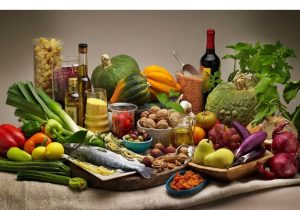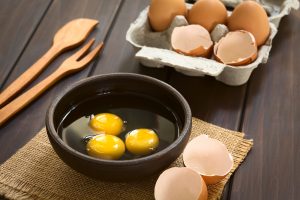Healthy eating and a healthy lifestyle are about balance and diversity, not restriction. Living in Arizona makes this easier with its plentiful year-round farmer’s markets providing fresh, in-season produce, and farm-direct beef, eggs, and dairy. Plus, our local grocery stores carry an abundance of Arizona’s local foods, especially dairy and our protein meats such as beef. 
Transform Your Diet with Smart Eating
To make lasting dietary improvements, focus on smarter eating habits:
- It’s not just about the food itself but also about how you consume it. According to the experts, it’s our dietary choices that can significantly lower your risk for conditions like cancer, diabetes, heart disease, and even depression, while improving energy levels, mood stability, and weight management.
- Instead of a drastic overhaul, introduce gradual changes. Enrich your diet with fruits and vegetables by incorporating them into your existing recipes and meal plans. Small, manageable changes are more sustainable.
Healthy Tip #1: Plan for Success
- Gradually shift your eating habits. Extreme overnight changes are rarely successful. Focus on the quality of your food rather than just quantity. Use color, freshness, and variety as your guides. Opt for snacks like apples or carrot sticks over processed options and replace some grains with vegetables at dinner.
Healthy Tip #2: Enjoy Your Food
- Eating healthily is about enjoying what you eat. Make meals visually appealing, share them with others when possible, and always remember, breakfast sets the tone for the day. Start with whole grains and fruit for a nutritious boost.
Healthy Tip #3: Eat the Rainbow
- Fruits and vegetables are vital. They’re low in calories yet high in nutrients:
- Greens for vitamins and minerals that enhance blood health.
- Fruits for antioxidants and vitamins; berries fight cancer, while citrus fruits are rich in Vitamin C.
- Sweet Veggies like sweet potatoes or carrots can satisfy sweet cravings healthily.
- Buy local and seasonal to maximize nutritional benefits and flavor.
Healthy Tip #4: Choose Healthy Carbohydrates
- Opt for whole grains over refined carbs. Whole grains, beans, and certain fruits and vegetables offer carbs that digest slowly, helping you feel full longer and avoiding blood sugar spikes.
- Whole grains like brown rice, quinoa, and barley are excellent choices, providing both fiber and antioxidants for disease prevention.
Healthy Tip #5: Include Protein
Protein is crucial for body repair and energy:
- Meats, like quality beef, for direct protein sources.
- Legumes such as beans and lentils for plant-based proteins.
- Nuts for a healthy snack packed with protein. Healthy living is about making informed choices that benefit both you and your family, integrating these into daily life with thoughtful planning.
Ensure your diet includes dairy, hydration, and regular exercise.





